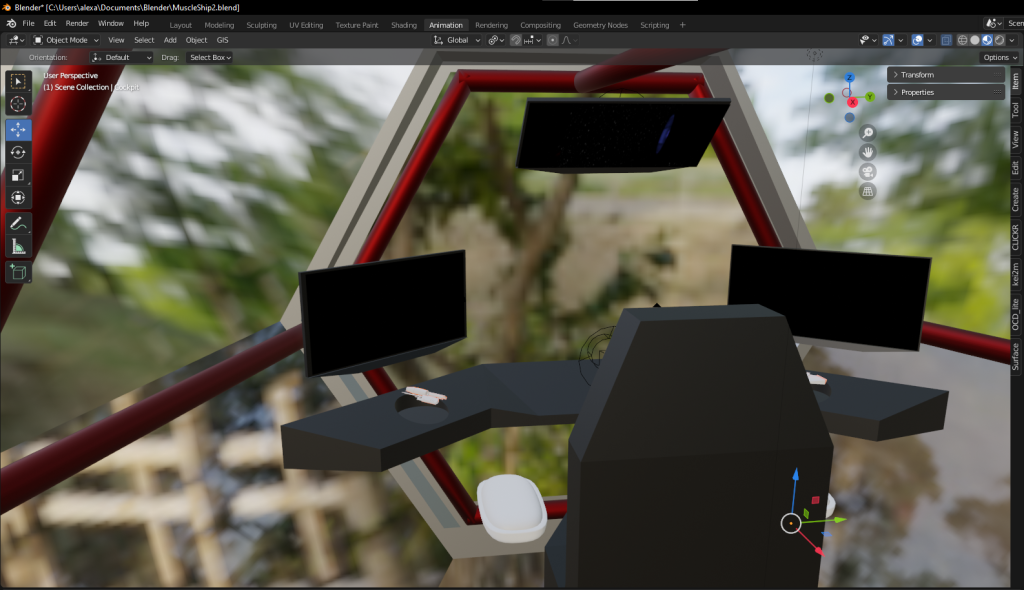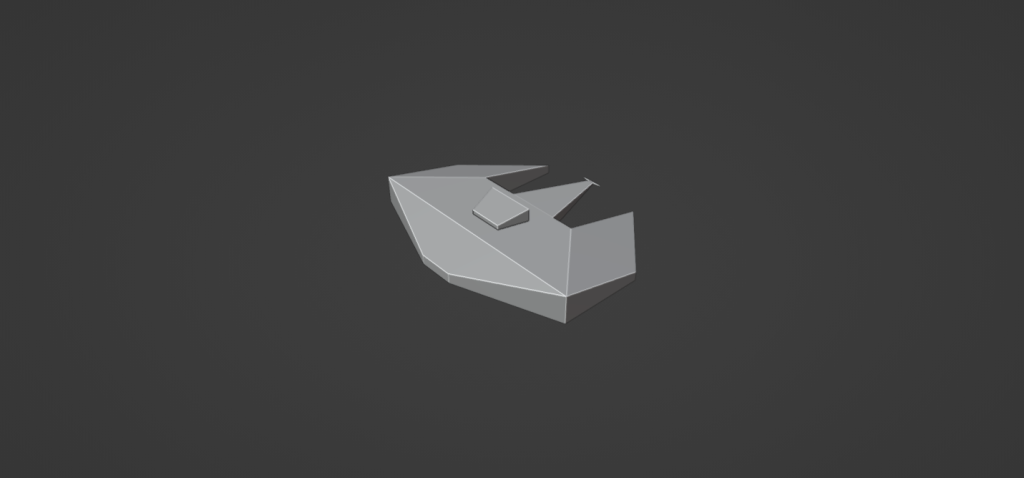For the interior, it is important to consider several factors such as camera placement, lighting, textures and materials and object placement. These are even more important than the exterior as the user will have the interior directly in front of them. To expand on these points, the placement of the camera is critical as it will act as the user’s viewpoint and determine what is visible and what is not, lighting is crucial for setting the mood and atmosphere of the scene and without proper lighting, the user will have a hard time following what is going on in the scene, the textures and materials of the objects in the scene can greatly affect their appearance and realism, the placement of objects in the scene will affect how the user interacts and absorbs the world around them.
The interior for this scene is a spaceship’s cockpit, therefore it needs to involve certain aspects in order to come across as the place from which the ship is controlled, to put it in simple terms I would need at least three things, a chair for the pilot to sit on, a screen for the pilot to look through and a device used by the pilot to steer the ship.
My first cockpit design was for my first ship design and although I would not end up using that design I still would incorporate parts of the interior design in my later iteration.
This design was as simple as a chair with three panels in front. The purpose of this was to test the overall concept of having the users view being inside of the cockpit of the ship, as well as testing rendering for 3d view. Note that you can see a sphere I placed in front of the glass panel to test its transparency as this was my first time using this type of shader. Other than the side windows reflecting badly, I would say this test was successful, I was also able to view the scene in full 360 view which I wasn’t 100% about as I was using Blender. As mentioned in ‘Development (Ship)’ this ship design was eventually changed, and I think rendering this test also helped me come to this decision, getting an inside perspective highlighted the lack of view from inside and the large amount of space that would be hard to fill.
Next, I would come to design the interior for the 2.0 ship, this was made easier by going through the process of designing the first ship. Learning from the last I realised I wanted a better view of the outside from the inside, therefore I took that into consideration when designing.

This is the second cockpit design shown in Material Preview (Compared to rendered preview which has more accurate lighting and reflections but slower response time). As you can see I made quite a few changes from the first design but I would say the core concept is still there. Starting with the exterior, I created a more open look by adding more glass panels for the viewer to look through, as the user is in a cockpit travelling through space most of what will happen will be outside the ship and therefore I don’t want to obscure the viewer’s vision, only as much as it would take to create a realistic looking inside to a spaceship. To add an added layer of detail I also added what could be described as a roll cage once again inspired by the theme of the ship (Hot rods).
Moving on to the area in which the viewer is placed, first off the viewer sits on a floating chair taking inspiration from the sci-fi/futuristic themes. As for colours I went for a metallic look with most assets and also added a few red textures to add a personal flare from the pilot. In front of the chair is the control panel for the ship, thinking of a more futuristic setup the pilot doesn’t have any sort of steering device and instead the ship is controlled by AI. To assist the pilot the control panel displays the various aspects of the ship including the thrusters on cam displayed on monitors and the exterior and drone through holograms.
I think it is also useful to mention the drone that will be used as a lens for the user at the end of the story. I decided on doing this later on in the design process so it may not have appeared in earlier designs.

The drone design is very simple in nature especially compared to the ship and this is due to its small size. Its purpose is to scout out unknown areas for the ship to navigate safely therefore it is small, quick and nimble. It has some aerodynamic qualities to it to convey its purpose further.
